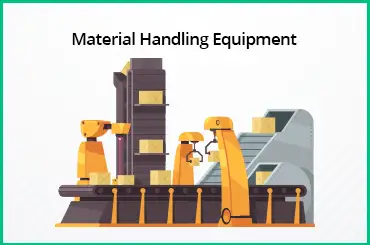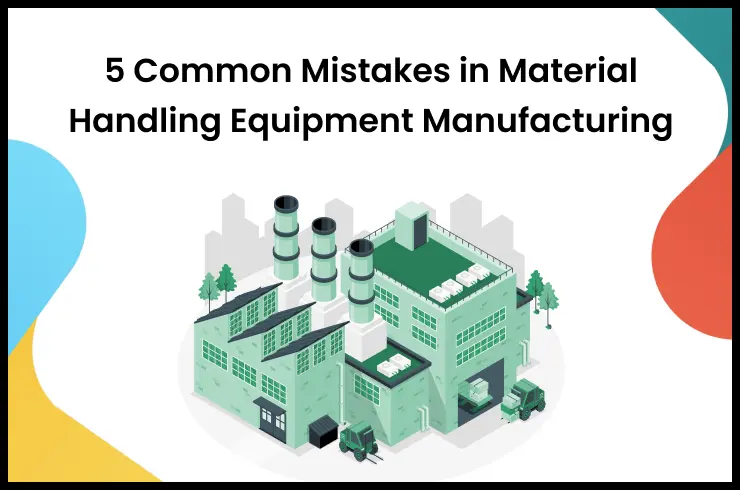Quality control in manufacturing is more crucial than ever as production units are expanding their scope, with each passing day. No manufacturer wants to cause the inconvenience of purchasing a poor product, but keeping an eye on every product that leaves the facility, manually, is impossible.
Hence, the role of quality control is always present in a manufacturing unit. In this article, you will understand about benefits of quality control in the manufacturing process, quality control examples in manufacturing, and more.
What Is Quality Control (QC)?
Quality Control is a process in which the existing quality of the manufactured product is verified with the predefined quality standard by the manufacturing unit. It is one of the important components of quality management and is used in various sectors such as manufacturing, healthcare, construction, and service industries.
The function of quality control department in manufacturing is to guarantee that the manufactured product is free from errors or defects and is suitable to meet the final consumer's expectations. The main function of the quality control department in manufacturing can be broken down into three categories. These include; enhancing product quality, reducing risks, gaining production efficiencies, and garnering customer loyalty.
The quality control process consists of defining, inspecting, testing, and analyzing a product. These steps help you identify and rectify any defects that might have been detected in the respective rounds. The function of quality control in manufacturing includes detecting any need for corrective measures in the manufacturing process.
The following are examples of quality control in manufacturing. They are; Product Quality, Service Quality, Experience Quality, information technology (IT) Quality, Data Quality, and Information Quality. Quality control in manufacturing can be done through seven basic quality control tools. These tools are heavily used in manufacturing units to ensure the best quality control process. The tools used are Cause and Effect Diagram, Check Sheet, Control chart, Histograms, Pareto chart, and Stratification.
Quality Control (QC) is often considered the same as Quality Assurance (QA). Both are a significant part of Quality Management but still have some changes. The relationship and distinction between the two have been explained in the next section.
Quality Control and Quality Assurance
Quality Control (QC) and Quality Assurance (QA) are two important components of a company's quality management system. While both aim to ensure the quality of products or services, they differ regarding their objectives and methods.
The need of quality control is paramount when it comes to inspecting and testing products or services to ensure they meet the specified quality standards. It is a reactive process that aims to identify and correct defects or non-conformities in the product or service before it is delivered to the customer. The types of quality control include activities such as product inspection, testing, and sampling.
On the other hand, Quality assurance is a proactive process that focuses on preventing defects or non-conformities from occurring in the first place. It involves developing and implementing processes, procedures, and standards to ensure the product or service meets the specified quality requirements. QA typically involves quality planning, process control, and continuous improvement.
QC is focused on identifying and correcting defects in the product. In contrast, QA is focused on preventing defects from occurring in the first place by establishing and maintaining a quality management system. QC and QA are important for ensuring the quality of products or services and should be integrated into a company's overall quality management system.
Benefits of Using Quality Control in Manufacturing
Some of the benefits of quality control in a manufacturing process are as follows:
Quality Responsiveness
The importance of quality control in manufacturing is that it fosters and supports quality consciousness among factory employees, which significantly aids in accomplishing the target level of product quality. Thus making the manufacturing process adhere to the set quality standards and making the process responsive to them.
Consumer Satisfaction
When you manufacture an error- or defect-free product, consumer satisfaction automatically follows. Quality control helps you in achieving it effortlessly.
Reduced Wastage
Quality control keeps the production quality of the product in check, it ensures minimal wastage of the materials. This, in turn, helps you in reducing production costs.
Optimum Resource Utilization
Not only does it reduce wages and production costs, but it also helps in properly utilizing all the resources in the most effective way. Not a bit of raw materials or other factors of production is ignored or overused once the quality control process is taken care of.
Quality Control Methods and Techniques
Understanding quality control methods in manufacturing is an important first step toward ensuring that all the manufacturing equipment is in good shape. This will guarantee that all the set standards of quality control get fulfilled. Let's look at two of the most common quality control methods.
Inspection
The first method includes inspection of the products manufactured. This can be noted down in 3 aspects:
- Product Inspection: To maintain the quality of the goods manufactured, regular product inspections are necessary. This can be achieved in either of the two ways - 100% inspection or sample inspection. The nature and period of inspection entirely depend on the company's budget.
- Process Inspection: Besides examining the product, the quality check of the manufacturing unit is highly important. In this quality control method, the quality of the raw material, equipment, and machinery should be properly inspected.
- Inspection Analysis: This can be done after all the inspection is completed. It analyzes which manufacturing unit is defected or which errors should be removed.
Statistical Quality Control
The second method includes statistical methods to support meeting set quality parameters. Statistical tools such as sampling, histograms, charts, and probability are used for the quality control process. Statistical Quality Control can be categorized into the following ways:
- Acceptance Sampling and Analysis: In this method, a batch of samples is selected, and a quality check is performed. After the QC is completed and a few defective items are found, these are again taken for QC. The least defective items are kept aside for further testing or their details are shared with the management for a decision on further processing.
- Process Control and Control Charts: This method showcases the tolerable limits of defective items through statistical tools such as charts. A range is being set, above which defective products are rejected.
- Corrective Measures: After the above-mentioned quality control techniques, a series of corrective measures should be drafted and implemented to avoid defective items in the future. This is done by collecting data on the nature of the defective items, and their reasons and by raising it to the production unit.
How Can Quality Control Be Improved in Manufacturing?
The quality control process can help you improve the products you manufacture. However, quality control methods themselves need upgrading too. Thus, implementing an effective quality control system ensures that your products meet or exceed customer expectations.
Below are some ways you can improve your quality control in manufacturing:
Define clear quality standards
Define your quality standards and make them clear to all employees. This will help ensure everyone understands what is expected and can work together to achieve those goals.
Provide on-the-job training to employees
Ensure that all employees receive adequate training on quality control processes and procedures. Provide ongoing training and reinforcement to ensure that quality standards are consistently met.
Use advanced quality control tools
These tools such as statistical process control, process mapping, and quality control charts, to monitor and improve quality control processes.
Conduct regular inspections
Conduct regular audits to identify improvement areas and ensure quality standards are being met. Thus timely product and process inspections can help you detect and lessen errors in the next production cycle.
Involve employees in quality control
Involve them in quality control processes by encouraging them to identify improvement areas and participate in problem-solving activities. This will help create a culture of continuous improvement.
Implement a consumer feedback system
Consumers are your genuine critics. Thus leverage this opportunity to its maximum. Implement a feedback system to capture customer feedback and use it to improve quality control processes.
Analyze, implement, and improve
Incorporate analyzing and corrective measures in your quality management program. This will help you to understand your previous quality control process in a better way. Hence, continuously reviewing and analyzing can help you improve your quality control processes and ensure they remain effective and efficient over time.
Quality Control, QA and Lean Manufacturing
Quality control, QA (Quality Assurance), and Lean manufacturing are all important concepts in quality management in manufacturing that focus on improving the quality of products and processes.
Quality control is ensuring that a product meets a certain level of quality. It involves the product throughout the manufacturing process to identify and correct any defects or issues that may arise. Quality control typically involves inspections, testing, and other methods to ensure the product meets certain standards.
Quality assurance is a broader concept that includes quality control but also involves a proactive approach to preventing defects from occurring in the first place. QA involves developing and implementing processes and procedures to ensure products are manufactured consistently to a high standard. This may involve creating quality standards, developing testing procedures, and implementing employee training programs.
Lean manufacturing is a process that focuses on cutting waste and improving efficiency in the manufacturing process. It involves identifying and removing any activities or processes that do not add value to the final product, such as excess inventory or unnecessary steps in the manufacturing process. Lean manufacturing also emphasizes continuous improvement and involves empowering employees to identify and implement improvements in the manufacturing process.
Efficient Quality Control Methods From TranZact
Manufacturers who consistently adopt efficient quality control procedures stand to gain significantly. The production and testing data from your facility provide key information required to meet this objective. TranZact has a robust tool for quality control managers that quickly improves quality control inside a facility by combining the power of statistics and automation. It facilitates simplified testing and recording of quality check results to improve the quality of deliverables and ensure customer satisfaction.
FAQs on Quality Control in Manufacturing
1. What is the difference between quality control and quality assurance?
Although both are quality management processes, quality control is reactive and detects errors in the manufactured units while quality assurance focuses on preventing defects.
2. What is the need for quality control?
Any manufacturing unit needs quality control methods to improve product quality, streamline testing operations, protect the business reputation, and also prevent it from being unreliable to its consumers.
















